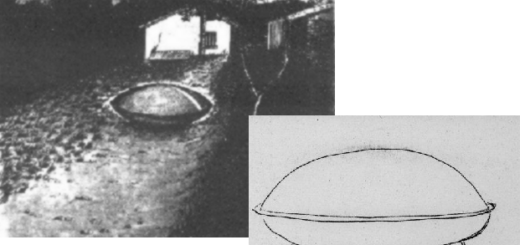Dragons And Dragon Kings In Ancient Mythology
– We encounter dragons in almost every ancient culture of the world. Dragons played an important role in the beliefs of our ancestors and these creatures were depicted in a variety of ways.
Dragons can be placed in two groups- East and West dragons, and they were regarded as either good or very fearsome and evil creatures.

In ancient China dragon was a highly significant creature that became a symbol of the Emperor and his throne was sometimes called the Dragon Throne. Ancient Chinese believed dragons were in control the weather and water. These creatures were said to be able to manipulate oceans, floods, tornadoes and storms.
There are nine distinctive Chinese dragons and some of them are serpent-like creatures with large bodies and long heads. The dragon in China is believed to be a benign creature that is said to bring wisdom, power and luck. They are famous for their goodness and to ward off evil, protect the innocent and bring safety to all.
Tradition and celebration of New Year in China can be traced to a dragon named Nien (or “year”).
Nien was a legendary wild beast that attacked people at the end of the old year. Villagers would use loud noises and bright lights to scare the creature away, a practice that slowly morphed into the Chinese New Year festivities. Today the dragon has its own year on the Chinese calendar.
On the British Isles and in Scandinavia, dragons were often depicted as wingless creatures. In this part of the world, the dragon was depicted as a more malevolent creature that was very difficult to kill. The West dragon was wingless and lived in dark places or wells where he was guarding hoard treasures. Approaching the dragon was almost impossible because of its poisonous fire breath.
Dragons in British and Scandinavian mythology often appear in stories when a prince tries to save a young maiden from being abducted by the fearsome animal. If he can slay the dragon, he can become the new King and win the girl as his bride.
In ancient Chinese mythology we encounter five enormous dragon kings who were rainmakers and rulers of the waters. Four of them were stationed at the cardinal points and ruled the seas. Their chief had his abode in the middle. The five dragon kings were named Lung Wang.
The dragon kings of China lived in crystal palaces under the sea. It was believed these underwater dwellings were part of the mysterious Underworld that could only be reached through underground mountain caves and special secret entrances. When the Water Dragons rose to the surface the caused typhoons and when they flew through the air caused heavy raining and hurricanes. The Dragon Kings are among the deified forces of nature of the Taoist religion.
A dragon’s head was one of the most famous symbols of the Vikings. The Viking dragon was in many ways a representation of the Midgard Serpent, a mythical sea creature who fought with the Norse god, Thor.
The reason why Vikings built ships with huge dragonheads was because they wanted to appear as frightening as possible from a long distance. Vikings called their longships “drakkar” or dragon ships and the dragon was a powerful and fearsome symbol of war.
Many have seen the Welsh flag features a red dragon and that the Prince of Wales uses rampant dragons on his banner.
The old British word “draig,” meant leader, and the word, “pen,” meant head. The two words combined to form Pendragon or Pen Draig, a noble surname in early Britain as early as the fifth century. The dragon symbol continued to be used by the last native Welsh princes of Wales, Llewelyn ap Gruffydd and Owain Glyndwr, during their struggles against English occupation in the 14th and 15th centuries.
The Pendragon name in Welsh literature includes Uther Pendragon, father of the legendary King Arthur.
In ancient times there also many superstitions about the dragon, and surprisingly some of them persists even today.
It was for example believed that the blood of the dragon held special properties that could give a person power to see in into the future. On the other hand, it was also said that if a knight dipped the tip of his sword into dragon’s blood and stabbed you with it, the wound would never heal.
Dragon teeth were thought to bring good luck to the person who possessed it.
The dragon has survived as a powerful symbol in many parts of the world.
Written by – A. Sutherland AncientPages.com Staff Writer
Copyright © AncientPages.com All rights reserved. This material may not be published, broadcast, rewritten or redistributed in whole or part without the express written permission of AncientPages.com



 Creators of mankind
Creators of mankind Description of “Tall white aliens”
Description of “Tall white aliens” Where they came from?
Where they came from? About hostile civilizations
About hostile civilizations The war for the Earth
The war for the Earth “Tall white aliens” about eternal life
“Tall white aliens” about eternal life Video: “Nordic aliens”
Video: “Nordic aliens” Aliens
Aliens Alien encounters
Alien encounters The aliens base
The aliens base UFO
UFO Technology UFO
Technology UFO Underground civilization
Underground civilization Ancient alien artifacts
Ancient alien artifacts Military and UFO
Military and UFO Mysteries and hypotheses
Mysteries and hypotheses Scientific facts
Scientific facts


















